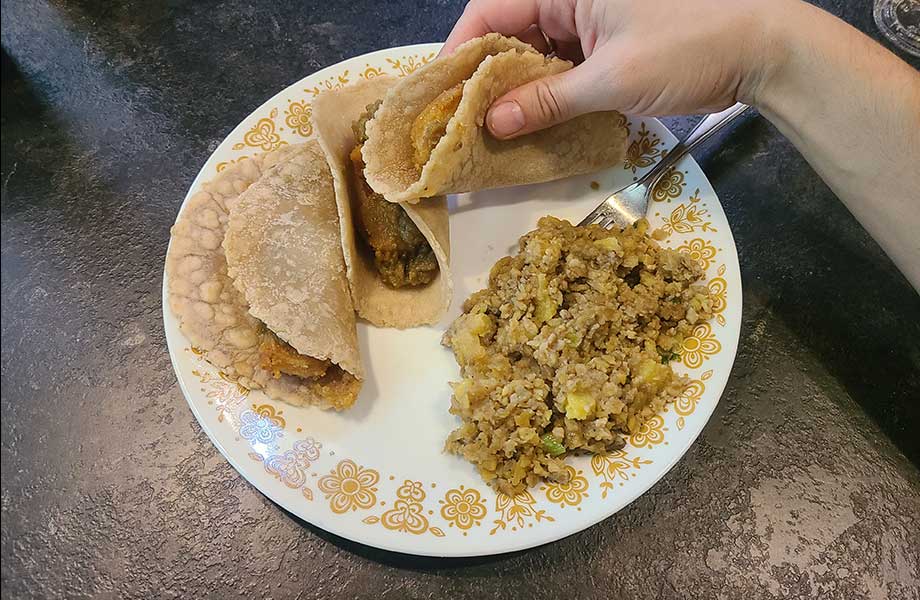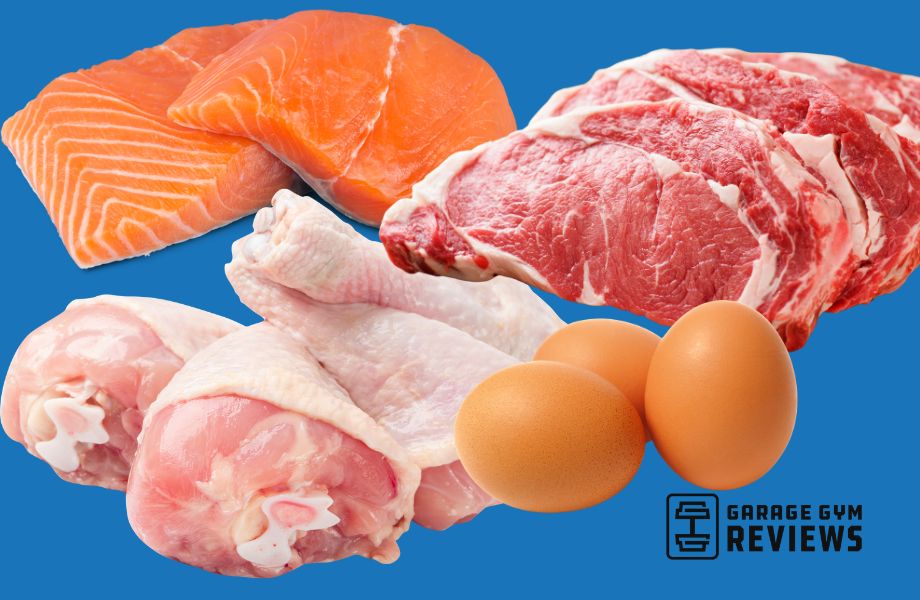The weight loss industry in the United States continues to grow by the year, and reports estimate1 that it reached a historic peak of $90 billion in 2023. GLP-1 weight loss drugs may be leading the way, but fat burners, weight loss plans, and diet plans have always played a significant role.
One of the most common (and concerning) trends is the rise and fall of fad diets. Throughout the years, many weight loss plans have become extremely popular, with plenty of books, guides, and products specifically marketed to accompany the diet.
Not all diet plans are bad, but many of these fad diets can do more harm than good. If fad diets worked for most people, the weight loss industry wouldn’t be reaching historic levels year after year.
As a certified nutrition coach who’s worked with clients for over a decade, I’ve seen plenty of dietary trends over the years. In this guide, I’ll answer the question, “What is a fad diet?” to help you spot potential red flags. You’ll learn what a fad diet is, how to spot one, potential concerns with various fad diets, and how to find a nutrition plan that actually works for you.
What Is a Fad Diet?
Before we get started, we first need to establish what a fad diet is. Many nutrition programs have names, books, and products available, but that doesn’t necessarily mean they’re fad diets. For example, low-fat and low-carbohydrate diets are popular, but that doesn’t make them fad diets.

According to a study published2 in Frontiers in Nutrition, “A fad diet is a popular dietary pattern known to be a quick fix for obesity. These diets are quite appealing due to the proposed claims, but the lack of scientific evidence is a big question mark. Such diets are often marketed with specific claims that defy the basic principles of biochemistry and nutritional adequacy.”
In other words, fad diets tend to promise quick fixes and fast results, but they often make claims that aren’t scientifically proven and may come with harmful side effects. Our research on weight loss statistics found that 49% of Americans attempt to lose weight every year, so it’s no wonder that fad diets continue to grow in popularity. However, if a diet sounds too good to be true, there’s a good chance it is.
RELATED: Types of Diets
Now, medical professionals may suggest interventions for weight management that focus on rapid weight loss, often to address urgent medical concerns. This article is focused on the fad diets sold to average consumers, not medically-supervised weight loss plans.
Risks of Following a Fad Diet
Now, you may be wondering what the big deal is with following a rapid weight loss diet. After all, even if there may be side effects, won’t you be healthier if you lose weight?
Not necessarily. Here are some of the biggest risks of following various fad diets.
Rapid Weight Loss
If you’re looking to lose weight, it’s tempting to look for a plan that promises the fastest weight loss possible. However, losing weight too fast can cause a number of issues.

The biggest issue with losing weight too quickly is the increased potential for muscle loss and a decrease in your metabolic rate, or how many calories you burn each day. According to a 2017 study3 from the International Journal of Endocrinology and Metabolism, slower weight loss resulted in a greater reduction in fat loss, while rapid weight loss resulted in decreased lean muscle, fat-free mass, and metabolic rate.
RELATED: Basal Metabolic Rate
In other words, losing weight at a slower pace of about 0.5% of your body weight per week was shown to preserve more muscle and reduce the risk of decreasing your metabolism. Both fast and slow weight loss plans were shown to improve cholesterol and blood sugar markers, but only the rapid weight loss caused significant muscle loss.
May Cause Health Issues
Depending on the diet you follow, you may have to restrict entire food groups. Fad diets commonly tell you to avoid consuming carbohydrates, and certain diets even prohibit fruit and vegetable intake.
This means you’ll miss out on fiber, an important nutrient for overall health, as well as the many vitamins, minerals, and antioxidants found in fruits and vegetables.

Lack of dietary fiber is a real concern, as many of us are already deficient. Research shows4 that adequate fiber intake can reduce your risk of cardiovascular disease, support a healthy gut, reduce the risk of constipation, regulate your appetite, and much more.
RELATED: Best Fiber Supplements
May Lead to Yo-Yo Dieting
Because fad diets usually promote rapid weight loss, often in unsustainable ways, yo-yo dieting is a common occurrence. This is when you lose a significant amount of weight in the short term, only to regain it after your diet ends. Many find themselves stuck in a cycle of losing and gaining the same weight over and over.
Not only is this frustrating, but it may also be dangerous. Yo-yo dieting has been shown5 to increase the risk of all-cause mortality from chronic diseases, especially mortality due to cardiovascular disease.
How to Spot a Fad Diet
If you’ve found a new diet you want to try and aren’t sure whether it’s an evidence-based approach to weight loss or simply the next trend, here are some of the biggest red flags to look for.
Promises of a Quick Fix
Most people interested in a fad diet are looking to reach a healthy weight. Weight gain is typically a slow, gradual process that creeps up on us, and weight loss should be no different—a slow and steady process.
You didn’t gain the weight overnight, and you’re not going to lose it overnight, at least not in a healthy, sustainable way. If the diet makes dramatic claims that sound too good to be true or the process seems far too easy, it’s likely a fad diet.
Catchy Name
Most of the common fad diets have some sort of catchy name, which helps them grow in popularity. There’s no name for a proper, balanced nutritional plan that can support weight loss, and fad diets are much easier to market and sell.

Even if you don’t know exactly how the following diets work, you’ve probably heard of the Paleo Diet, Carnivore Diet, Keto Diet, Mediterranean Diet, intermittent fasting, and more. While those plans may have their pros and cons, they’re perfect examples of marketable diets.
This leads me to my next point…
Branded Products and Supplements
Many fad diets are created by people who want to make money, and the diets often have plenty of “approved” foods and supplements to go along with them. From Paleo cookies to Whole30-approved products, there’s no shortage of snacks and supplements marketed to those following a specific diet plan.
RELATED: Best Weight Loss Programs
As a certified nutrition coach who’s helped hundreds of clients lose weight for more than a decade, I can promise that you don’t need special supplements to reach your goals, especially as these specialized foods often come with a higher price tag.
Don’t fall for marketing claims, testimonials on social media, and expensive products. A balanced diet can include all kinds of foods.
Eliminates Entire Food Groups
It’s very clear that weight loss is a result of a calorie deficit, and no single food group is to blame. If you want to reduce your carbohydrate or fat intake or avoid dairy products, you certainly can. Just know that you can lose weight with a balanced, healthy eating plan that includes all of the macronutrients.
If a diet blames all of your health problems on a single food group or includes rigid rules that ban specific foods, it’s likely a fad diet.
Common Fad Diets
If you’re still not sure how to spot a fad diet, here are some of the most popular diets and trends we tend to see, along with what’s generally included in each of these plans.

Mediterranean Diet
Of all the fad diets, the Mediterranean Diet may be the most balanced approach to eating, but most people would still consider it a fad diet. This diet is based on traditional Mediterranean foods, with a heavy emphasis on fruits, vegetables, healthy fats, and animal protein from poultry and beef, with an extra emphasis on fish.
This certainly isn’t a bad way to eat, but it still encourages people to avoid certain foods entirely, which isn’t necessary.
Zone Diet
Similar to the Mediterranean Diet, the Zone Diet emphasizes whole foods and a balanced plan. However, it uses very specific macronutrient ratios as general guidelines for all who follow the plan, which doesn’t take into account individual needs and preferences.
According to the Zone Diet, every plate of food should contain 40% carbohydrates, 30% fats, and 30% protein. This may be fine for many people, but certain populations may have specific needs. For example, endurance athletes may need a high-carbohydrate diet, while those focused on building muscle may want to follow a high-protein diet.
Paleo Diet
The Paleo Diet encourages followers to eat like humans did during the Paleolithic era. It recommends foods that were sourced from hunting, gathering, or fishing, claiming this is the healthiest way to eat. It also limits food groups like grains, legumes, and dairy.
This isn’t the worst way to eat, but the Paleo diet is one of the most heavily marketed diet plans I can think of in recent years. While I’m certainly not a history expert, I doubt that our caveman ancestors were drinking Paleo protein shakes or eating Paleo cookies after a long day of hunting and foraging.
Carnivore Diet
The Carnivore Diet is exactly what it sounds like. You’re allowed to eat animal products and nothing else.

This plan eliminates all fruits, vegetables, whole grains, and legumes from your diet, all of which are universally considered healthy foods by anyone who hasn’t fallen for the Carnivore Diet claims. By removing these foods, you’ll miss out on key vitamins, minerals, and nutrients like fiber, all of which have important health benefits.
Whole30
The Whole30 diet is a 30-day elimination diet that focuses on eliminating processed foods. While this isn’t a bad idea, and you can certainly follow a Whole30 eating plan for as long as you want, a 30-day elimination diet already has an end date included in the plan, which isn’t ideal.
After all, if you plan to revert to your old ways of eating after 30 days, you’ll likely gain back any weight you may have lost.
How to Avoid Fad Diets
If all of these diets are so bad, how should you diet for weight loss?
The only correct answer is that there is no one-size-fits-all diet plan, and you should follow a diet that’s customized to your goals and needs. Weight loss is a result of a sustained calorie deficit, where you eat fewer calories than you burn each day.
This can be achieved with a variety of eating plans paired with regular physical activity, so it’s important to find one that works for you.

RELATED: How Many Calories Do You Burn In A Day?
Here are the most important factors to consider when choosing a nutrition plan.
Follow a Personalized Plan
A good diet will be personalized to your goals, preferences, budget, and schedule.
If you’re a highly active individual, a low-carb diet may be completely counterintuitive to your goals. If you’re a busy parent with young children, you may not have the time or budget to eat nothing but unprocessed foods for every meal.
RELATED: Macros for Fat Loss and Muscle Gain
Whether you’re building your own plan or working with a nutrition coach or registered dietitian, your personal needs and eating pattern preferences should be considered.
Make It Sustainable
Dieting for weight loss isn’t easy, but it should feel reasonably sustainable. If reaching your goal weight makes you miserable, it will be hard to achieve long-term weight loss.

Instead, try to build eating habits you’ll feel comfortable following for years to come. If you’re counting the days to the end of your diet during your first week, you may want to reconsider and find a plan that feels more sustainable.
Set Realistic Goals
Finally, you should always be realistic when choosing a plan. Most research agrees that a safe rate of weight loss is 0.5% to 1% of your body weight each week. This can help you lose body fat without risking muscle loss, especially when paired with adequate protein and resistance training.
If a diet makes extreme claims about how fast you’re going to lose weight or has you on the brink of starving yourself to achieve rapid weight loss, you’re probably setting yourself up for disappointment.
What Is a Fad Diet: Final Thoughts
Fad diets promise rapid weight loss, often using unsustainable methods that may cause muscle loss and other health risks, all while setting you up to regain the weight as soon as you’re done. Some diets may work well, but if the weight loss doesn’t last, they’re probably not worth following.
If you’re considering a diet that eliminates entire food groups, sells special supplements and products, or simply doesn’t feel sustainable, you may want to consider a different plan.
- Fad diets offer a “quick-fix” solution to weight loss, which often isn’t realistic or sustainable.
- These plans can increase your risk of muscle loss, cause a reduction in metabolic rate, and lead to yo-yo dieting, which may cause serious health issues like an increased risk of heart disease.
- The best diet plan is one that’s customized to your goals, needs, and preferences and focuses on sustainable weight loss rather than shortcuts.
What is a Fad Diet: FAQs
What are common fad diets?
Some of the most common fad diets include the Atkins Diet, Zone Diet, Paleo Diet, and Carnivore Diet.
What are fad diets, and why are they unhealthy?
Fad diets promise a quick-fix solution to weight loss. This is often unsustainable and may lead to health risks such as muscle loss, metabolic slowdown, nutrient deficiencies, and more.
What’s the best diet for quick results?
Any diet that significantly restricts your calorie intake will lead to rapid weight loss. However, rapid weight loss diets are often unhealthy, unsustainable, and may lead to serious health issues.
References
- LaRosa, J. (2024, March 6). U.S. Weight Loss Industry Grows to $90 Billion, Fueled by Obesity Drugs Demand. Blog.marketresearch.com. https://blog.marketresearch.com/u.s.-weight-loss-industry-grows-to-90-billion-fueled-by-obesity-drugs-demand
- Tahreem, A., Rakha, A., Rabail, R., Nazir, A., Socol, C. T., Maerescu, C. M., & Aadil, R. M. (2022). Fad Diets: Facts and Fiction. Frontiers in nutrition, 9, 960922. https://doi.org/10.3389/fnut.2022.960922
- Ashtary-Larky, D., Ghanavati, M., Lamuchi-Deli, N., Payami, S. A., Alavi-Rad, S., Boustaninejad, M., Afrisham, R., Abbasnezhad, A., & Alipour, M. (2017). Rapid Weight Loss vs. Slow Weight Loss: Which is More Effective on Body Composition and Metabolic Risk Factors?. International journal of endocrinology and metabolism, 15(3), e13249. https://doi.org/10.5812/ijem.13249
- Barber, T. M., Kabisch, S., Pfeiffer, A. F. H., & Weickert, M. O. (2020). The Health Benefits of Dietary Fibre. Nutrients, 12(10), 3209. https://doi.org/10.3390/nu12103209
- Brownell, K. D., & Rodin, J. (1994). Medical, metabolic, and psychological effects of weight cycling. Archives of internal medicine, 154(12), 1325–1330.







